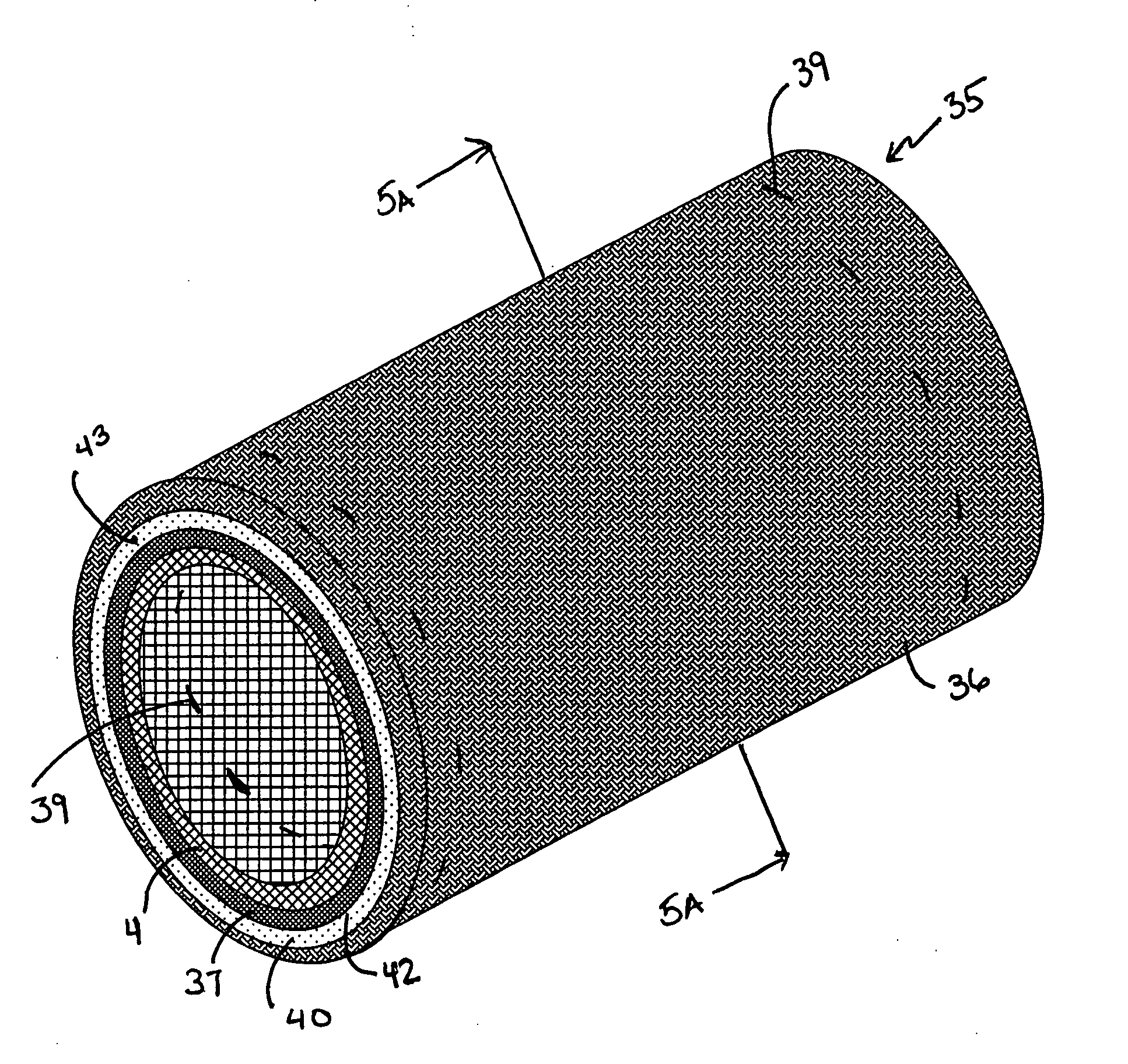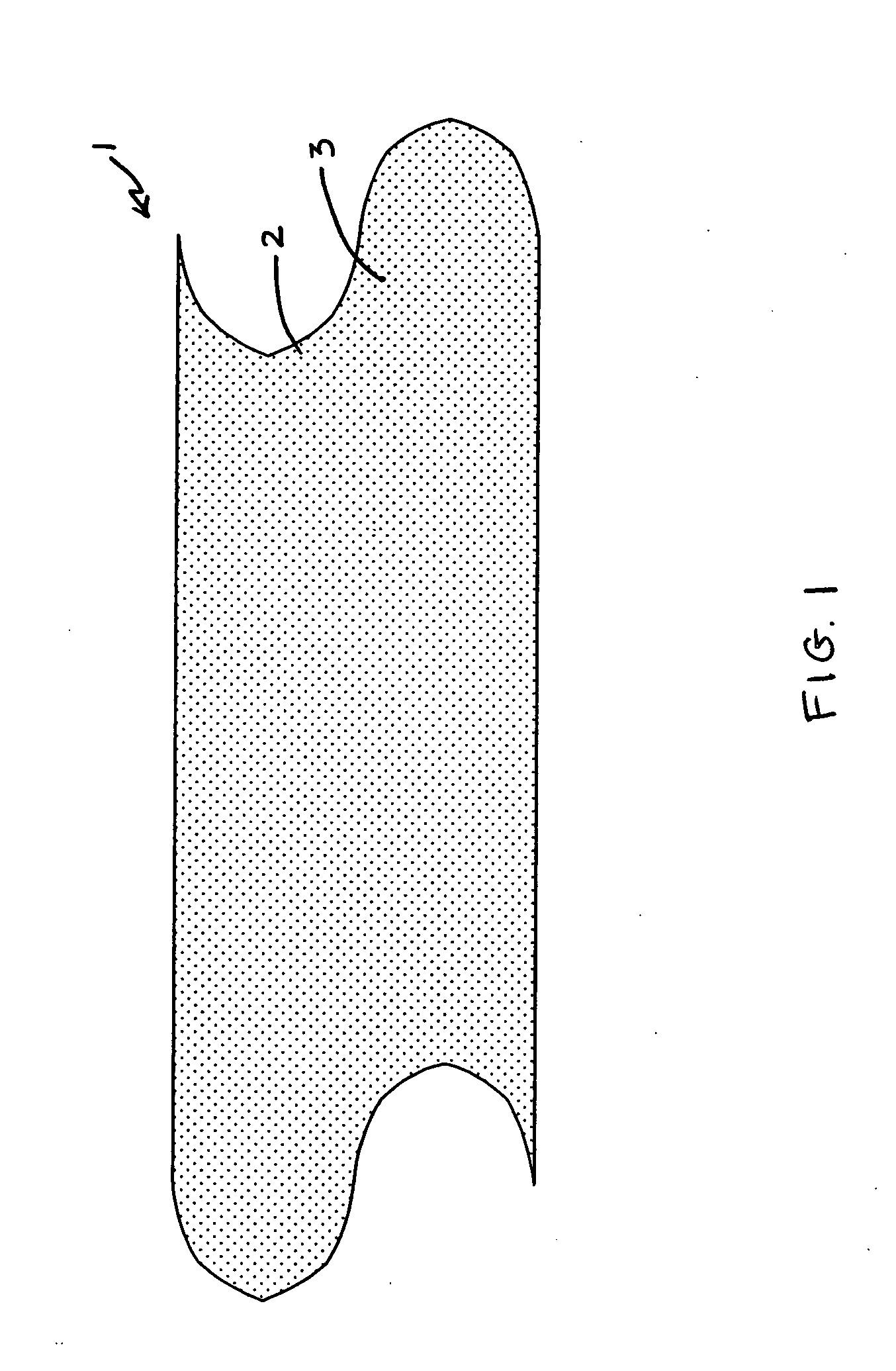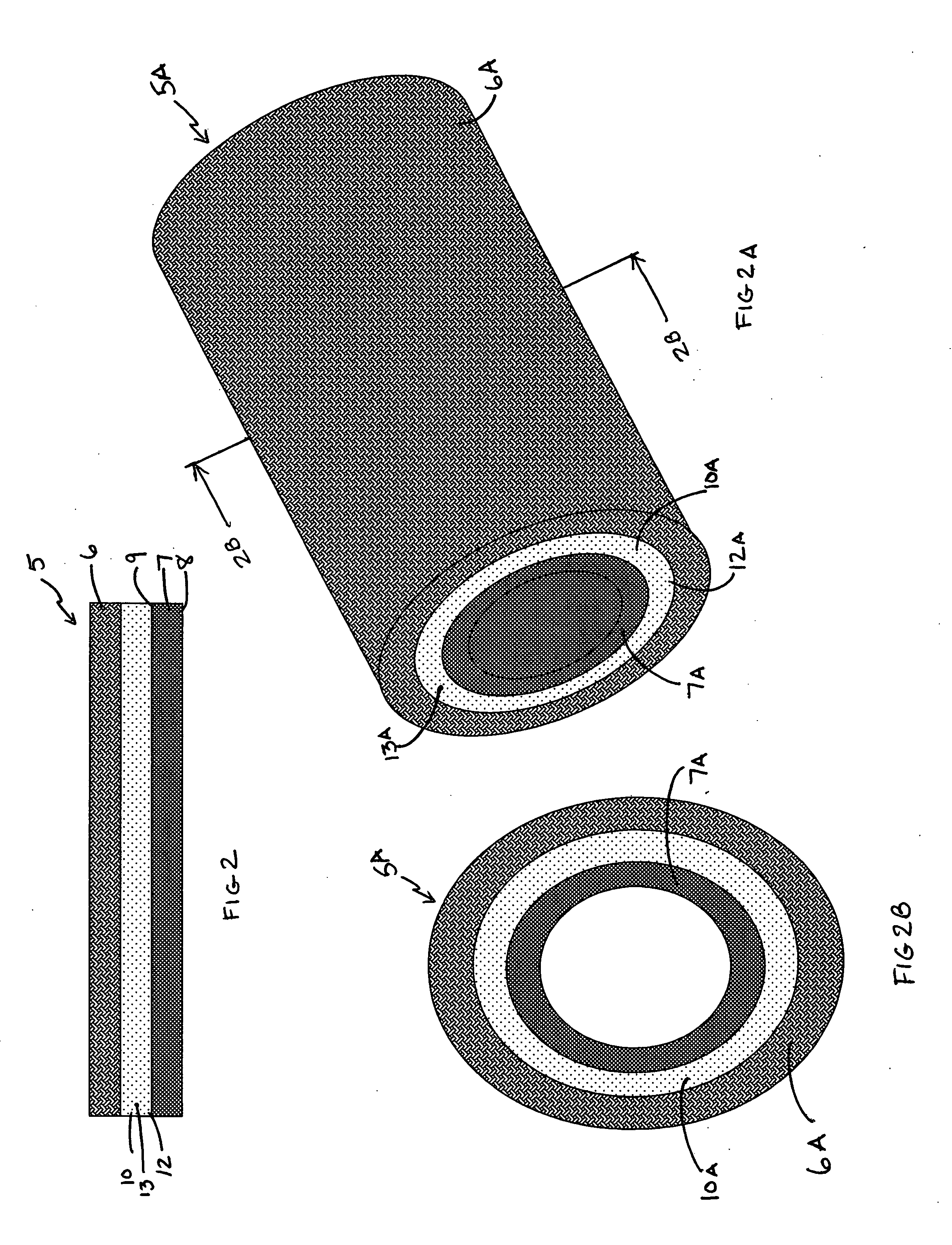Elastomeric radiopaque adhesive composite and prosthesis
a radiopaque adhesive and composite technology, applied in the direction of prosthesis, non-macromolecular adhesive additives, blood vessels, etc., can solve the problems of radial expansion and possibly longitudinal foreshortening, textile prosthesis may exhibit certain undesirable characteristics, and the graft flexibility may create undesirable stresses, etc., to achieve enhanced tissue ingrowth, minimize the thickness of the textile layer, and high suture retention strength
- Summary
- Abstract
- Description
- Claims
- Application Information
AI Technical Summary
Benefits of technology
Problems solved by technology
Method used
Image
Examples
Embodiment Construction
[0043] The present invention provides for an elastomeric radiopaque adhesive composition. The composition includes a biocompatible elastomeric matrix and a radiopaque material distributed therein in sufficient amounts to produce a radiopaque image.
[0044] Referring to FIG. 1, a schematic view of a portion of a cured elastomeric radiopaque adhesive composition 1 of the present invention is shown. The composition 1 may be used and formed into various devices for implantation use such as a graft, patch, prosthesis or any other implantable structure, or portion thereof.
[0045] The composition 1 includes a biocompatible elastomeric matrix 2 and a radiopaque material 3 distributed therein in sufficient amounts to produce a radiopaque image. Preferably, sufficient amounts of radiopaque material is provided to produce a radiopaque image in an implanted situation.
[0046] In the present invention, the elastomeric matrix 2 may include various biocompatible, elastomeric bonding agents such as u...
PUM
| Property | Measurement | Unit |
|---|---|---|
| size | aaaaa | aaaaa |
| size | aaaaa | aaaaa |
| size | aaaaa | aaaaa |
Abstract
Description
Claims
Application Information
 Login to View More
Login to View More - R&D
- Intellectual Property
- Life Sciences
- Materials
- Tech Scout
- Unparalleled Data Quality
- Higher Quality Content
- 60% Fewer Hallucinations
Browse by: Latest US Patents, China's latest patents, Technical Efficacy Thesaurus, Application Domain, Technology Topic, Popular Technical Reports.
© 2025 PatSnap. All rights reserved.Legal|Privacy policy|Modern Slavery Act Transparency Statement|Sitemap|About US| Contact US: help@patsnap.com



